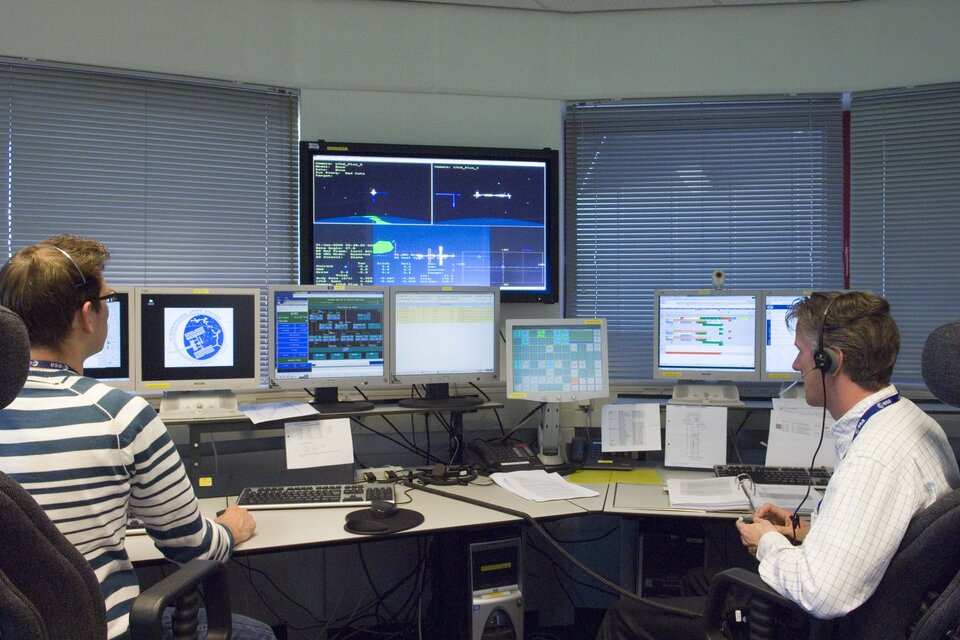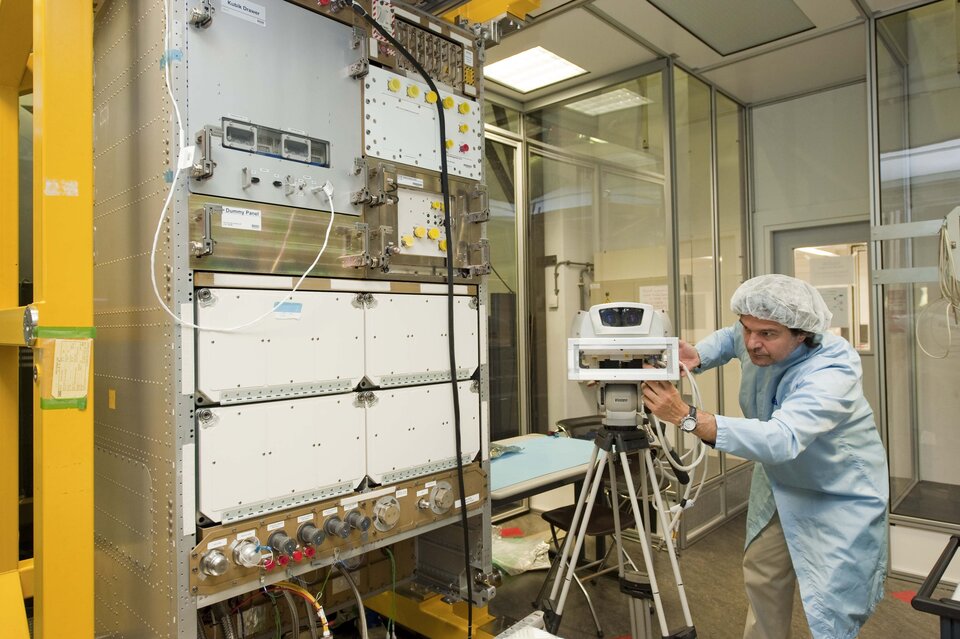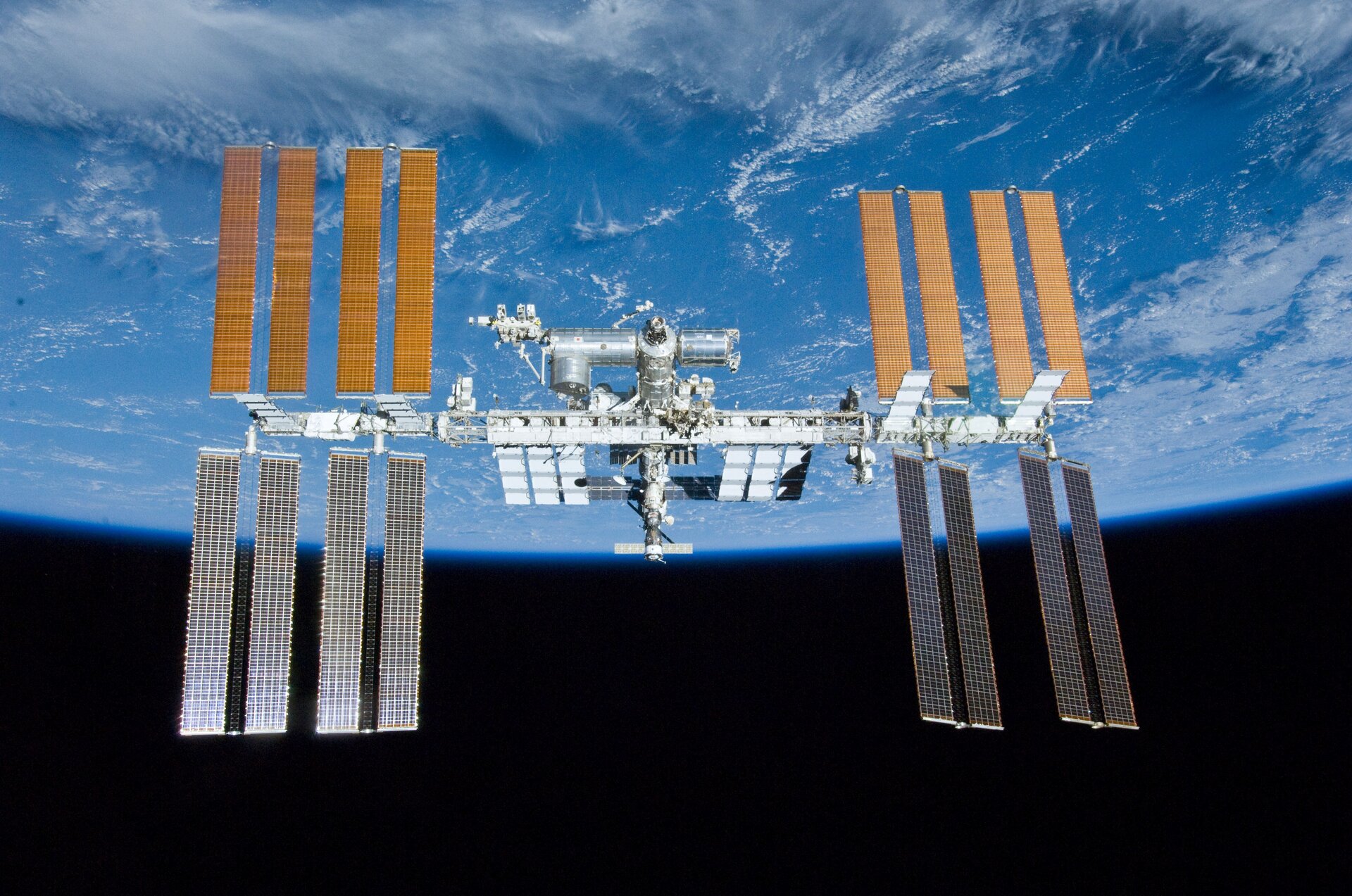Dutch 'Ground Control' centre for Space Station missions
On 15 September 2010, the European Space Agency and the Dutch government will sign an agreement on extension of a special Dutch control centre for missions to the International Space Station.
The Erasmus User Support and Operations Centre (USOC) is located at the European Space Research and Technology Centre (ESTEC) in Noordwijk, the Netherlands. The Dutch Ministry of Economic Affairs is funding the USOC for a period of three years with €1.8 million. The signing will take place on Wednesday, September 15th at 17:00 at ESTEC. Media are welcome.
Floating scientists

"Noordwijk, ISS here. I am starting the experiments in weightlessness onboard the space station, over." The USOC is exactly what you expect from a high-tech ground control for a space mission. Large screens show viewpoints from different angles onboard the ISS, where astronauts are suspended at work. On other screens, operators track the ground path of the space station around the Earth. And scientists from around Europe participate in videoconferencing to talk about the progress of their experiments and influence current issues. A special link allows data from experiments to return to scientists on Earth via the USOC.
The Dutch USOC is located in the Erasmus Centre at ESTEC in Noordwijk, and specialists from the National Aerospace Laboratory (NLR) man the USOC. They assist scientific utilisation and data dissemination for scientific experiments on the ISS.
Expertise in Holland

Outgoing Minister of Economic Affairs Maria van der Hoeven stresses the importance of the USOC in Noordwijk: "With ESTEC we have the crème de la crème of the European space expertise within our borders. That is very important for the Dutch economy. Therefore, I gladly support the USOC. And it’s, of course, great that we in Holland can assist André Kuipers and his colleagues in their space mission."
Since the launch of ESA’s Columbus space laboratory in 2008, USOC’s have supported scientific experiments from across Europe. USOC’s connect scientists with astronauts who spend at least thirty hours per week on research. Simonetta Di Pippo, ESA's Director of Human Spaceflight: "Following confirmation from the USA, Russia and Japan, Europe needs to decide soon on the extension of the scientific use of the ISS to 2020, and beyond. The renewed agreement with the Dutch authorities puts this USOC in a better position to support the collection of results from the European scientific experiments onboard the ISS, and we look forward to seeing this USOC involved in the operations of the European Robotic Arm from 2012 onwards. I would like to thank the Dutch Minister for her personal interest in this undertaking."
Science on the ISS

The experiments to be supported by the USOC are those of the European Drawer Rack (EDR) and the previous European Technology Exposure Facility (EuTEF). The EDR is a flexible experimental platform for various scientific disciplines onboard Columbus. EuTEF is an experiment module for science to be done outside the European Columbus Laboratory. The USOC supports the processing of the first results of the EuTEF experiments, which were returned to Earth last year by the Space Shuttle, and prepares for new EuTEF experiments.
The Netherlands Space Office (NSO) played a crucial role in the creation of the USOC. NSO Director Ger Nieuwpoort: "The experiments that astronauts do in space, lead eventually to applications on Earth where we all benefit from them. The USOC in Noordwijk provides a better and more efficient translation of space technology to terrestrial applications."
One such application is the TU Eindhoven and Philips developed energy-saving plasma lamp. In 2004 Kuipers performed experiments on the ISS with the lights to see how stable the light source could be made. The results were subsequently developed with the support of the NSO.
NLR prepared the work for the USOC in conjunction with IT company Task24.
Note to editors:
The signing of the USOC contract follows the crew news conference about the mission of the Italian ESA astronaut Paolo Nespoli, who is currently in Houston.
Paolo Nespoli supports the competition, "Mission X: Train like an astronaut," which uses the life of astronauts in space as a good example to improve the health of young people on Earth. Children from the Noordwijk School, one of the eleven Dutch schools that participate in the competition, will hear Paolo Nespoli talk about the competition live.
The complete program:
| 13.30 | Welcome |
| 14.00 | Crew news conference Paolo Nespoli and Expedition 26/27 |
| 14:00 – 14:15 | Human Spaceflight and Exploration in Europe, Simonetta Di Pippo, ESA Director of Human Spaceflight |
| 14:15 – 14:30 | Mission overview |
| 14:30 – 14:45 | Science overview |
| 14:45 – 15:00 | Mission X: train like an astronaut |
| 15:00 – 16:00 | Live connection with ESA astronaut Paolo Nespoli (Q&A), including school children from the Noordwijk School |
| 16:00 – 16:45 | Opportunity for the media to conduct interviews, take pictures |
| 17.00 | USOC signing |
| 17:00 – 17:25 | Welcome and introduction |
| 17:25 – 17:30 | Signing the agreements |
| 17:30 – 17:45 | Q&A |
| 17:45 – 18:00 | Opportunity for the media to conduct interviews, take pictures |
| 18:00 – 18:45 | Optional High Bay tour + Virtual Reality tour, including demo of USOC |
Those interested in attending the media event - or a portion thereof - should contact:
Margherita Buoso
Tel. +31 (0)71 565 4982
Email Margherita.Buoso@esa.int






